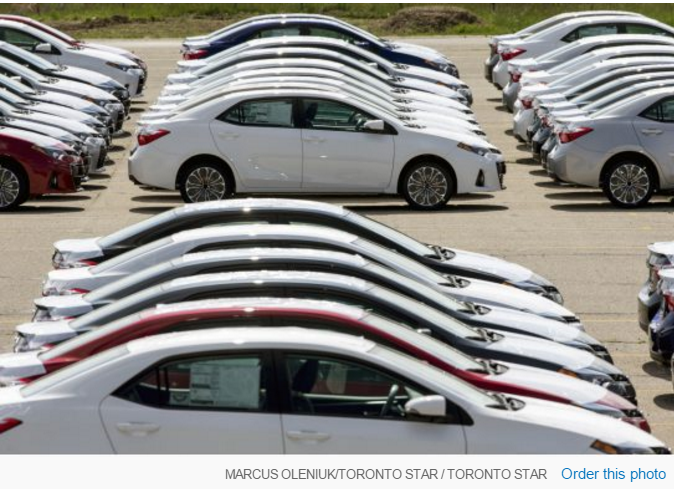It’s been a battle of another sort as the U.S. Federal Reserve seems set finally – after crying wolf for more than a year – to raise its key interest rate by a quarter of a point. It would be the first increase in almost a decade.
Interest rates have been at or near zero since 2006. The Fed pushed them down to stave off a financial collapse. It did the trick, encouraging consumers to borrow and spend. It brought U.S. housing back from the brink, has pumped up stock prices and created $2.5 trillion out of thin air, which is still sitting on the books of U.S. banks.
It’s no accident a decision is being made nine days before Christmas when the financial world is winding down for the two week holiday period. Nobody is quite sure how this is going to play out. Stock markets have been behaving erratically at the thought. A rate hike may already be factored in, so the fall swoon may be over. If not, all the better to move when attention is focused elsewhere.
The U.S. is our biggest trading partner and what they do affects us in a big way. Here are some implications of a U.S. interest rate rise:
Energizer #1: Confident Americans
An increase signals that the U.S. economy is starting to hum after seven lean years. Consumers account for the bulk of the American economic activity and they are back in a big way. The economy is creating jobs and unemployment rate has fallen to 5 per cent which is considered full employment. Wages are rising. Spending is up.
This is why the rate rise is coming now. These forces usually create inflation and with all that money sloshing around, policy makers want to act sooner rather than later to stop inflation from building. They’re not sure if inflation is a big or small problem, but the amount of money they created through quantitative easing is unprecedented.
Our economy is along for the ride. Demand rises for everything we sell from energy and resources to manufactured products. One sign of the good times is car sales. They’ll set a record in the U.S. in 2015, exceeding a high set 15 years ago in 2000, according to Automotive News. Canada is the world’s 10th largest automaker and many of the cars Americans drive are made in Oshawa, Brampton or Alliston.
Auto exports are just one sign of the times. Scotiabank economist Aron Gampel said in a recent briefing Canadian exports have increased at a 9 per cent annualized rate since the low in February. Expect more momentum in 2016 .
Energizer #2: A 72-cent dollar
Our dollar ranks among the worst performing major currencies against the greenback in the past year. Canada and Australia, both huge exporters of energy and minerals, have seen their currencies fall about 25 per cent and 30 per cent, respectively against the U.S. currency.
This week’s 72.5. cent U.S. level is an 11 1/2 year low. It may seem awful, but the headwinds have yet to abate, CIBC economist Avery Shenfeld says.
In an interview with The Star last week he said: “I think a 70 cent (U.S.) Canadian dollar is now in sight.”
Bad news for those heading south to Florida or the the Caribbean where things are priced in U.S. funds. Mexico may be a cheaper option this year.
But a pickup in U.S. growth and a weaker dollar is more fuel for our economy. This is especially so in industries that are exchange-rate sensitive. Beyond cars this includes industrial machinery, electronics, aircraft and parts and consumer goods.
Read the full post in Toronto Star


Leave a Reply